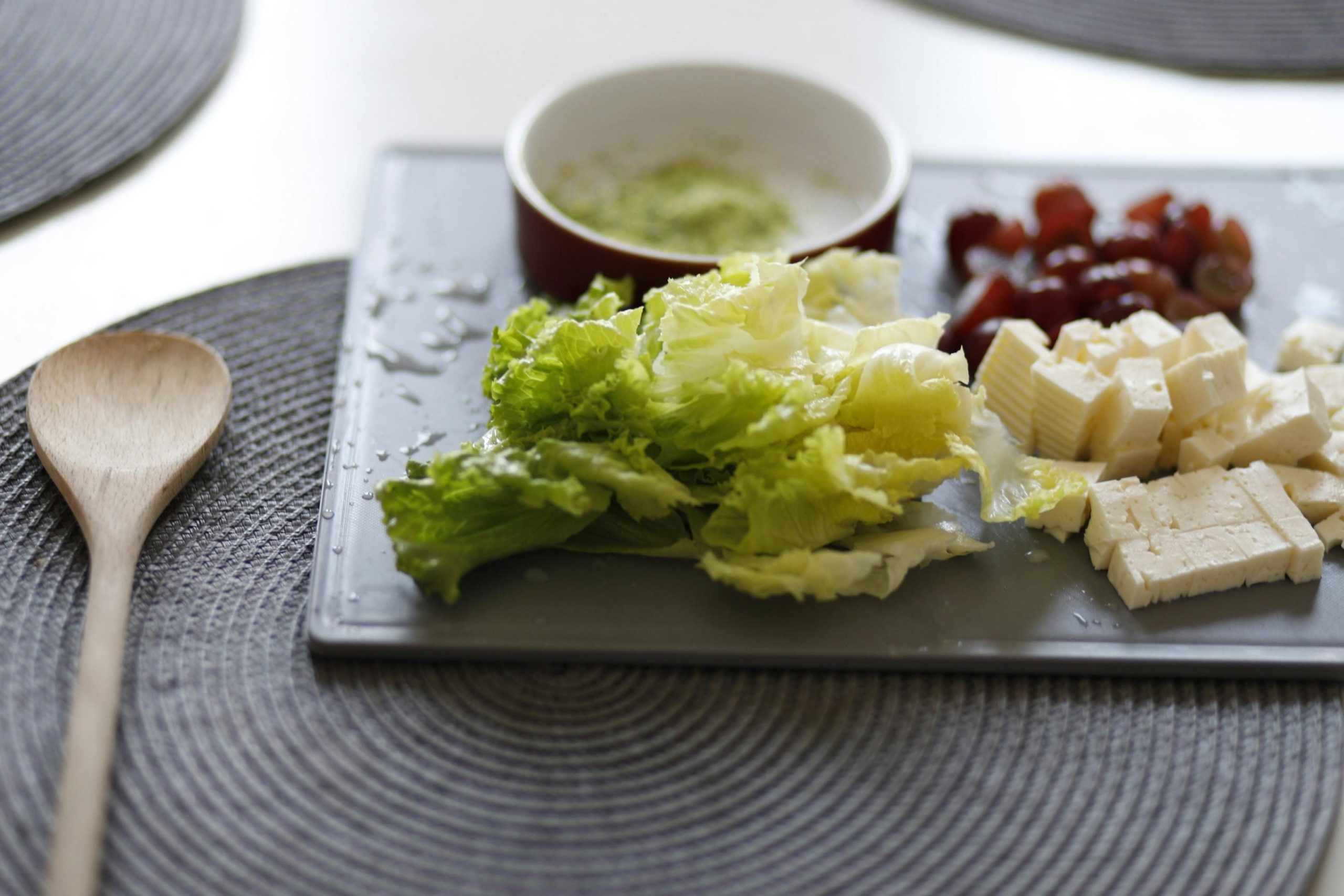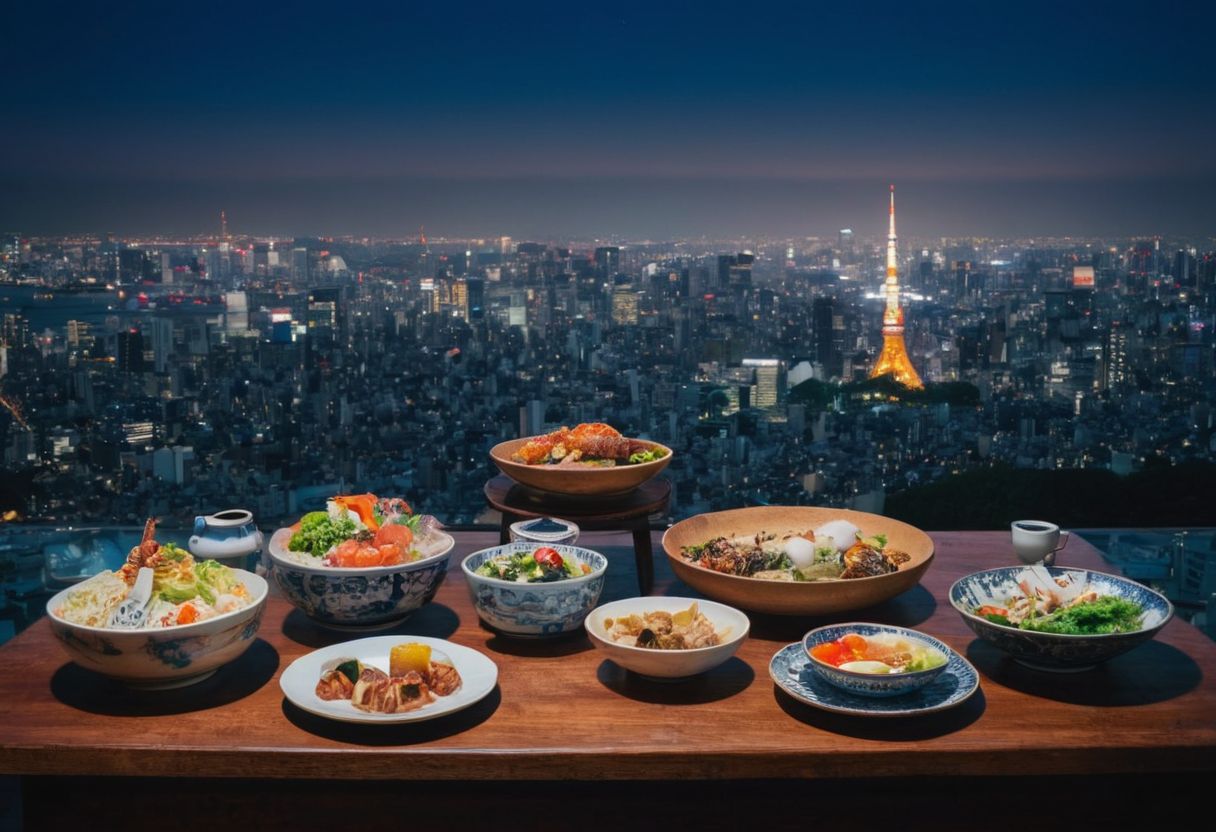Ever wondered what makes Japanese izakaya food so irresistibly good?
Finding the perfect balance of flavours to complement your drink can be a challenge, especially if you’re new to izakaya-style dining.
Izakaya food is designed to enhance the experience of your drink, featuring a variety of dishes from salty edamame and crispy karaage to fresh sashimi and hearty yakitori, all perfect for sharing.
In this guide, we’ll explore the traditional and modern dishes that define the izakaya dining experience, delve into the etiquette of izakaya dining, and even discover how you can enjoy izakaya food in Zurich through exclusive culinary tours.
Understanding Etiquette at Izakayas: Key Rules to Follow

When stepping into a typical izakaya in Japan, understanding the etiquette can greatly enhance your dining experience. Izakayas, often referred to as Japanese pubs, are casual places but they do have certain unspoken rules that are worth noting. From how you order to how you interact with staff and fellow diners, each aspect contributes to the communal and vibrant atmosphere of these establishments.
One fundamental rule is the respectful handling of drinks. It’s customary to wait for everyone at your table to have their drink before starting. A communal toast, usually with a hearty “kampai”, is a must. Additionally, it’s considered polite to serve drinks to others before filling your own glass, ensuring that no one’s glass is empty for too long.
Another key aspect involves the seating arrangements. The most important guest typically sits furthest from the entrance, a position known as ‘kamiza’. While this might not always be explicitly arranged in more casual settings, being aware of these nuances can show your respect for Japanese cultural practices.
Navigating Seating Charges at Izakayas
At many izakayas, you’ll encounter a seating charge known as ‘otōshidai’ or ‘sekiryō’, which can be a surprise if you’re not familiar with the practice. This fee is per person and not only covers your seat but also includes a small appetiser known as ‘otōshi’. This dish is served to everyone and is a part of the izakaya dining experience, adding an element of surprise to your meal.
The cost of this charge varies, typically ranging from ¥200 to ¥1000. Since it’s not optional, it’s a good idea to ask about this fee before you sit down to avoid any surprises. Remember, the seating charge is a standard practice in many izakayas, especially in busier or more tourist-prone areas, and reflects the establishment’s hospitality.
Smoking Policies at Izakayas: What to Expect
Smoking policies in izakayas have evolved significantly in recent years. Traditionally, izakayas were known as smoker-friendly venues, but recent regulations have introduced more stringent controls. Now, it’s common to find designated smoking areas within or smoking rooms attached to an izakaya, ensuring that the smoke does not disturb non-smoking guests.
When visiting an izakaya, look for signs indicating the smoking policy, which might include complete bans or designated smoking zones. These policies vary significantly depending on the location and the size of the izakaya, with stricter rules generally in place in larger cities like Tokyo and Kyoto.
How to Handle the Bill at an Izakaya

Paying the bill at an izakaya is typically straightforward but does carry its own set of etiquettes. In most cases, the bill is either left at your table throughout your meal or presented upon request. It’s common to take the bill to the cashier near the exit when you’re ready to leave, rather than paying at the table.
Splitting the bill evenly among all diners, regardless of individual consumption, is a common practice known as ‘warikan’. This method simplifies payment and is reflective of the communal and sharing nature of izakaya dining. If you’re unsure, observing what others do or asking the staff can help guide you through the process.
Popular Drinks Served at Izakayas

Izakayas, often described as Japanese pubs, offer a wide variety of drinks that perfectly complement the casual and sociable dining atmosphere. From refreshing Japanese beers served cold and often on draft, to a diverse selection of sake (nihonshu), which can be enjoyed either warm or chilled depending on the season or personal preference, the beverage options are designed to enhance the overall dining experience.
Besides beer and sake, izakayas also serve a range of other alcoholic beverages such as shochu, a robust distilled spirit, and umeshu, a sweet plum wine that is delightful on the rocks. For those who prefer something lighter, chuhai—a shochu highball mixed with soda and a splash of fruit flavor—offers a refreshing alternative. These drinks are not only delicious but are also an integral part of the izakaya’s appeal, making the food even more enjoyable.
For non-alcohol drinkers, there’s no shortage of options either. Many izakayas offer a selection of soft drinks, including uniquely Japanese offerings like melon soda and oolong tea, which provide a soothing balance to the flavorful dishes served. This inclusivity ensures that everyone can find something to sip on, making izakayas a welcoming spot for all types of diners.
Exploring ‘All You Can Drink’ Options at Izakayas
The ‘all you can drink’ option, or nomihoudai, is a popular choice at many izakayas, allowing guests to enjoy unlimited refills of their favorite beverages for a fixed price and duration. Typically, this offer includes a range of alcoholic drinks such as beer, sake, and various mixed drinks, providing a fantastic way to try different beverages without worrying about the cost per glass.
To make the most out of an all-you-can-drink experience, it’s wise to pace yourself and drink responsibly. Often, there’s a time limit—usually around one to two hours—so it’s a good idea to order your next drink before your current one runs out. This strategy helps avoid any delays and ensures a steady flow of drinks, allowing you to fully enjoy the izakaya atmosphere without any hassle.
Typical Dishes to Try at an Izakaya

Izakayas are the perfect place to dive into a range of Japanese dishes, both traditional and modern. Typical dishes include yakitori, which are skewered and grilled pieces of chicken, often enjoyed with a cold beer. These small plates are designed to be shared, making the dining experience a communal and enjoyable one.
For those who prefer something from the sea, sashimi is a popular choice at izakayas. Fresh slices of raw fish, served with soy sauce and wasabi, offer a light and refreshing option. Besides these, you might also find:
- Edamame, salty green soybeans
- Fried chicken, known as karaage
- Various sushi rolls
Modern izakayas also incorporate dishes influenced by international cuisine, adding a contemporary twist to the traditional menu. Items such as French fries and pizza can sometimes be found alongside classic izakaya dishes. This blend of old and new ensures that there’s something to satisfy everyone’s taste at an izakaya.
‘All You Can Eat’ at Izakayas: A Culinary Adventure
The ‘all you can eat’ option at izakayas, known as tabehoudai, presents a fantastic opportunity to explore a variety of dishes at a fixed price. Typically, this includes unlimited servings of select menu items such as sushi, yakitori, and edamame. It’s important to note that premium items may not be included and ordering outside the set menu can incur additional charges.
To make the most of an all-you-can-eat experience at an izakaya, here are a few tips:
- Pace yourself to enjoy a range of dishes
- Be mindful of the time limit, usually around 2-3 hours
- Finish your plates to avoid wasting food
This approach allows you to enjoy a diverse culinary experience while getting great value for your money.
Decoding the Izakaya Menu: What to Order

Stepping into an izakaya, you’re greeted with a variety of choices that can cater to any palate, making it a delightful challenge to decide what to order. Typical snacks include edamame, salty green soybeans that are perfect for nibbling on while you sip your drink, and karaage, a Japanese-style fried chicken that is both juicy and crispy. For those with a taste for something more substantial, yakitori, skewered and grilled chicken, is a popular choice that pairs wonderfully with a cold beer.
If you’re in the mood for seafood, sashimi is a must-try at any izakaya. This dish consists of fresh slices of raw fish, served with soy sauce and wasabi, offering a refreshing taste that complements stronger flavours. Other common dishes you might encounter include:
- Tempura, deep-fried vegetables or seafood
- Yakisoba, fried noodle dish often mixed with pork and vegetables
- Tofu dishes like agedashi tofu, which is lightly fried and served in a hot broth
These options showcase the diversity of izakaya menus, ensuring there’s something to satisfy every diner.
Understanding Time Limits at Izakayas
At many izakayas, especially during busy periods, time limits may be imposed to manage the flow of customers. This usually ranges from 1 to 2 hours, starting from the moment you are seated. These limits ensure that everyone has a chance to enjoy the izakaya experience, particularly in smaller or highly popular locations where space is at a premium.
To make the most of your time at an izakaya, it’s wise to be aware of these limits and plan your visit accordingly. Here are a few tips:
- Arrive early or during off-peak hours to potentially avoid strict time constraints.
- Keep an eye on the time yourself, as staff may give you a gentle reminder when your time is almost up.
- Order promptly after being seated to maximise your dining experience within the given time frame.
Discover Izakaya Food in Zurich with INDULGE
INDULGE offers a unique way to discover izakaya food right in the heart of Zurich. Through their expertly curated culinary tours, participants not only taste a variety of izakaya dishes but also gain valuable insights into the culture and preparation techniques behind each dish. These tours are perfect for anyone looking to deepen their understanding of Japanese pub cuisine while enjoying a social and delicious dining experience.
Each tour is led by knowledgeable guides who provide exclusive access to some of the best izakayas in Zurich. Participants will:
- Learn about the history and significance of izakaya dining in Japanese culture.
- Enjoy a selection of dishes that are typical of izakaya menus, such as yakitori and sashimi.
- Experience the vibrant atmosphere of a traditional izakaya, right in Zurich.
This makes INDULGE‘s tours an unmissable opportunity for both locals and tourists eager to explore new culinary landscapes.
Frequently Asked Questions
What is izakaya style food?
Izakaya style food comprises a variety of dishes designed to complement drinks, featuring items like salty edamame, crispy karaage, fresh sashimi, and hearty yakitori. These dishes are typically shared among diners in a casual pub setting, enhancing the social and communal dining experience.
What is izakaya food in Japanese?
The term “izakaya” in Japanese refers to a type of casual pub where people enjoy drinks accompanied by a variety of dishes. These dishes are collectively known as “izakaya food”.
What is the difference between yakitori and izakaya?
Yakitori refers to a specific dish commonly served at izakayas, consisting of skewered and grilled pieces of chicken. In contrast, izakaya is not a dish but a type of Japanese pub that serves a wide range of dishes, including yakitori, as part of its menu.
What is the difference between izakaya and restaurant?
An izakaya is a type of Japanese pub that offers a casual dining atmosphere with a focus on drinks and small, shareable plates of food, fostering a communal and sociable dining experience. A restaurant, on the other hand, typically provides a more formal dining setting and may offer a wider variety of dishes and a more extensive menu.








